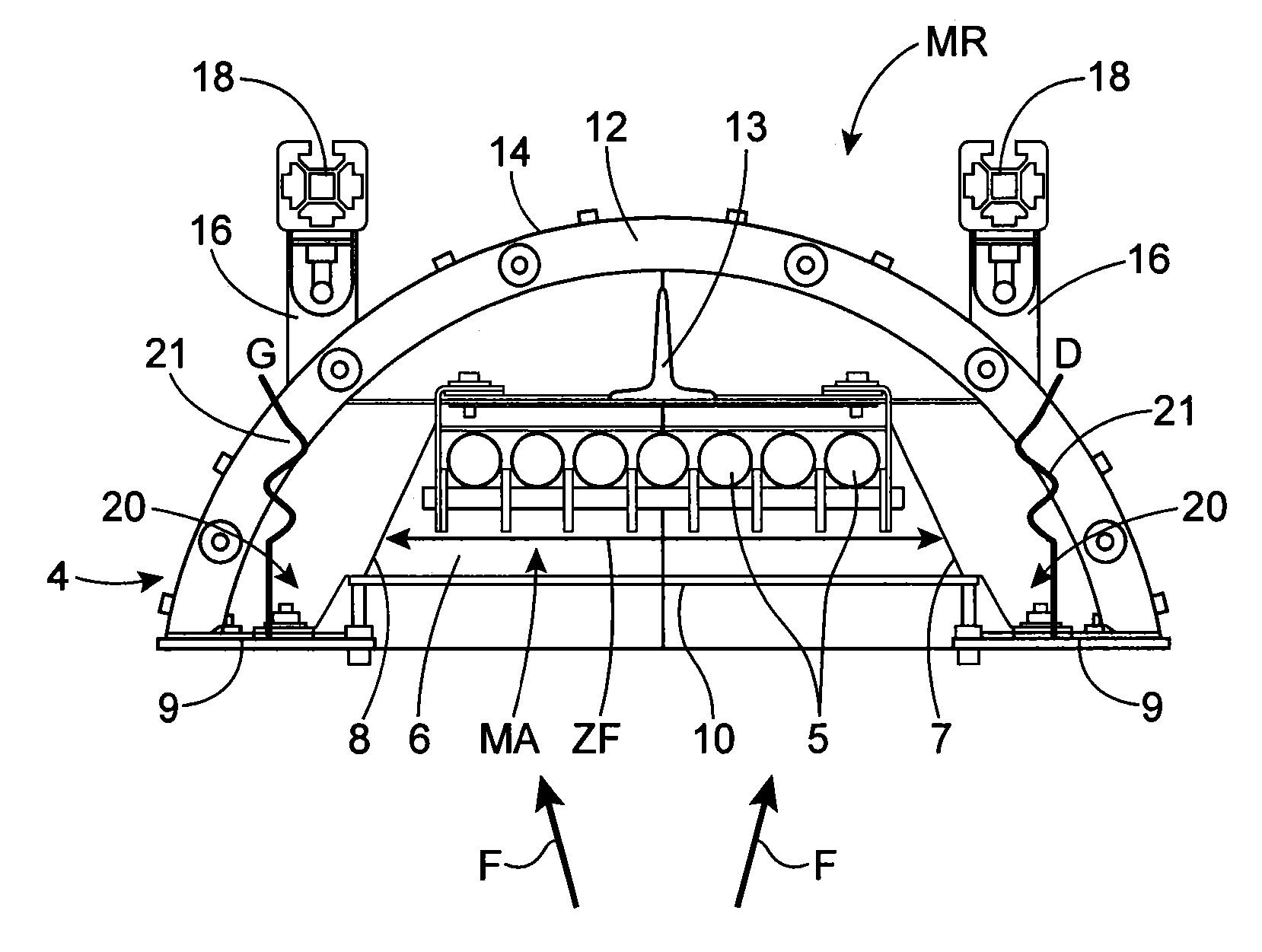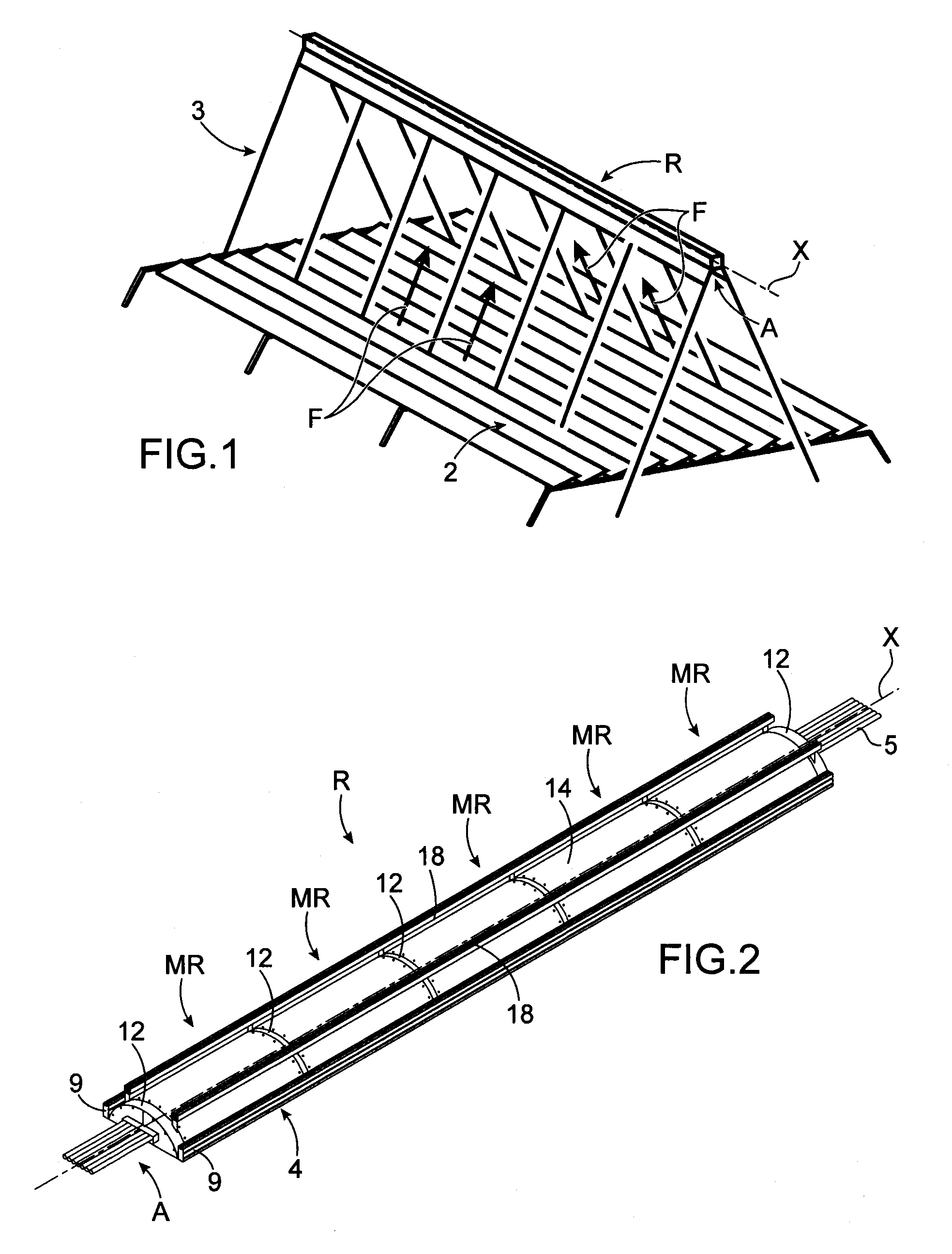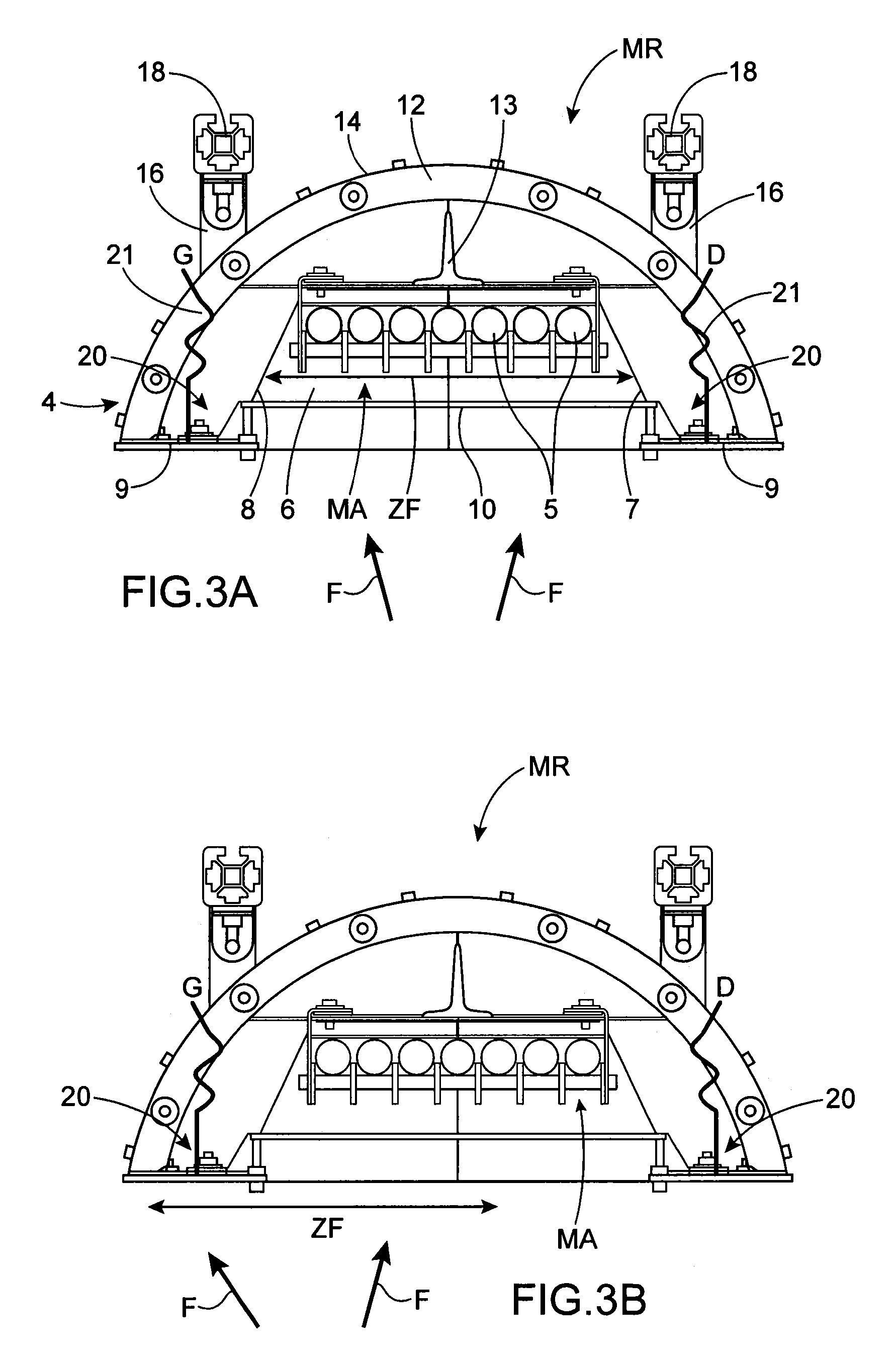Receiver module for solar power station with in-built thermal monitoring
a solar power station and receiver module technology, applied in the direction of solar heat collectors for particular environments, solar radiation concentration, solar heat collector safety, etc., can solve the problems of permanent deformation and damage to the structure, complex and bulky devices, and inability to properly align and/or focus solar flux reflected by mirrors relative to the absorber
- Summary
- Abstract
- Description
- Claims
- Application Information
AI Technical Summary
Benefits of technology
Problems solved by technology
Method used
Image
Examples
Embodiment Construction
[0022]One aim of the present invention is consequently to provide a solar receiver of simple and robust construction, in which an alignment fault and / or a fault of focusing of the solar flux on the absorber may easily be detected.
[0023]The stated aim is attained by a solar receiver having a metal structure, at least one absorber supported by the metal structure and means positioned in the metal structure to detect a temperature difference compared to a reference temperature for this structure. This temperature difference is representative of a positioning fault and / or fault of focusing of the solar flux on the absorber.
[0024]In other words, a positioning and / or focusing fault of the concentrated solar patch by the appearance of a temperature difference of the metal structure, in proximity to the absorber, compared to its temperature in an optimum operating condition, in which the solar patch illuminates only the absorber, is detected.
[0025]By virtue of the invention, the detection o...
PUM
 Login to View More
Login to View More Abstract
Description
Claims
Application Information
 Login to View More
Login to View More - R&D
- Intellectual Property
- Life Sciences
- Materials
- Tech Scout
- Unparalleled Data Quality
- Higher Quality Content
- 60% Fewer Hallucinations
Browse by: Latest US Patents, China's latest patents, Technical Efficacy Thesaurus, Application Domain, Technology Topic, Popular Technical Reports.
© 2025 PatSnap. All rights reserved.Legal|Privacy policy|Modern Slavery Act Transparency Statement|Sitemap|About US| Contact US: help@patsnap.com



